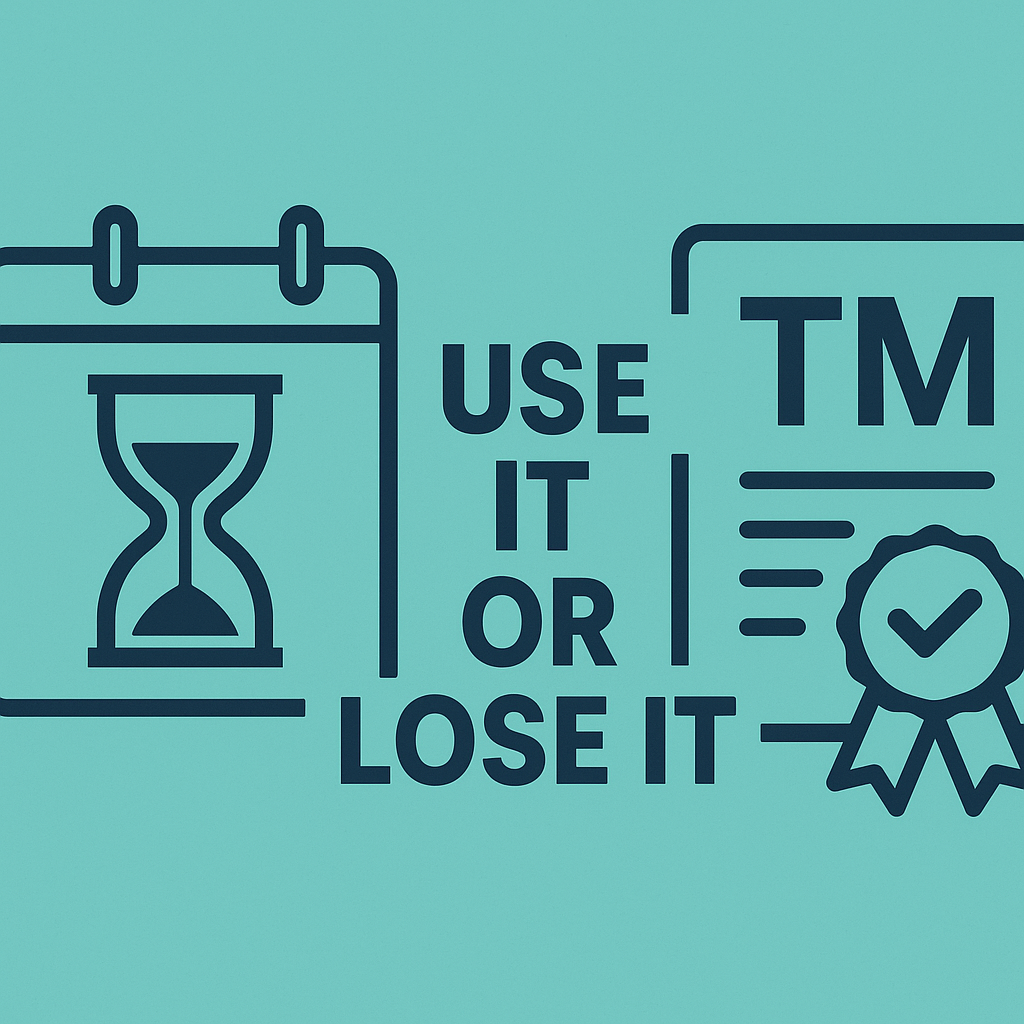Brand Control, Part 6: “Use It or Lose It” — Genuine Use and Trade Mark Non-Use Risks
 Registering a trade mark is a powerful step in protecting your brand — but it’s not a “set and forget” exercise. A trade mark registration gives you exclusive rights, but only as long as you’re actually using the mark. If not, those rights can be challenged — and even removed.
Registering a trade mark is a powerful step in protecting your brand — but it’s not a “set and forget” exercise. A trade mark registration gives you exclusive rights, but only as long as you’re actually using the mark. If not, those rights can be challenged — and even removed.
Welcome to the world of non-use risk.
⏳ The Non-Use Sword of Damocles
Under section 92 of the Trade Marks Act 1995 (Cth), a registered trade mark can be removed from the register — in whole or in part — if it hasn’t been genuinely used in Australia for a continuous period of three years.
It’s not enough to just own the registration. If someone applies to remove your mark, and you haven’t been using it properly, the burden shifts to you (under section 100) to prove genuine use.
You get a couple of years’ grace when you first apply to register a mark – no-one is allowed to strike it out for non-use within its first five years. However, after that period, if you haven’t got evidence of use of the mark as a trade mark within the last three years, practically anyone can apply to IP Australia to strike the registration out for non-use.
It’s also important to note that minimal or token use — or use for goods/services that fall outside your registered classes — might not be enough to save the mark.
✅ What Counts as “Genuine Use”?
Genuine use means real commercial use — not legal window-dressing.
Examples include:
-
Selling goods or services under the mark in Australia
-
Use of the mark on product packaging, websites, online listings, advertisements, invoices or other customer-facing materials
-
Promotional campaigns that demonstrate actual market exposure
Crucially, the use must occur in Australia, or in the jurisdiction where the mark is registered. International use won’t save an Australian registration.
❌ What Doesn’t Count?
Some activities may feel like “use”, but the law may see them differently — especially if challenged:
-
Trade mark squatting — registering marks with no intent to use them, just to block others or hold for ransom
-
Keeping a dormant website with no actual trading activity
-
Intra-group transfers or token licensing that generate no public exposure or commercial sales
Courts are good at sniffing out contrived “use” made only to defend against a removal action.
💡 IP Mojo Tip
Use it like you mean it.
A registered trade mark is only as strong as the use that backs it. You should:
✔️ Keep good records of sales, ads, online listings and brand use.
✔️ Don’t register in broad classes “just in case” unless you can genuinely support that use.
✔️ If you’re not using part of your registration — and don’t plan to — consider cleaning it up proactively before someone else forces the issue.